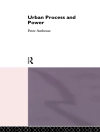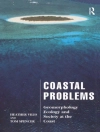Both theoretically informed and empirically rich, Defensible Space makes an important conceptual contribution to policy mobilities thinking, to policy and practice, and also to practitioners handling of complex spatial concepts.
* Critically examines the geographical concept Defensible Space, which has been influential in designing out crime to date, and has been applied to housing estates in the UK, North America, Europe and beyond
* Evaluates the movement/mobility/mobilisation of defensible space from the US to the UK and into English housing policy and practice
* Explores the multiple ways the concept of defensible space was interpreted and implemented, as it circulated from national to local level and within particular English housing estates
* Critiquing and pushing forwards work on policy mobilities, the authors illustrate for the first time how transfer mechanisms worked at both a policy and practitioner level
* Drawing on extensive archival research, oral histories and in-depth interviews, this important book reveals defensible space to be ambiguous, uncertain in nature, neither proven or disproven scientifically
Содержание
List of Figures vi
List of Tables viii
Glossary of Acronyms ix
Series Editors’ Preface xi
Acknowledgements xii
Preface xiii
1 Defensible Space: An Introduction 1
2 Defensible Space Is Mobilised in England 32
3 Defensible Space Goes on Trial but Attracts Those in Power 64
4 Operationalising Defensible Space 102
Case Study ‘ The Mozart Estate: A Laboratory for Defensible Space’ 141
5 Evaluations of Defensible Space 156
6 The Uptake and Resilience of Defensible Space Ideas 187
7 Defensible Space: A Common Sense, Middle-range Theory 219
References 251
Index 279
Об авторе
Loretta Lees is an urban geographer who is internationally known for her research on gentrification/urban regeneration, global urbanism, urban policy, urban public space, critical geographies of architecture, and urban social theory. She has been identified as the only woman in the top 20 most referenced authors in urban geography worldwide (Urban Studies, 2017). Since 2009 she has co-organised The Urban Salon: A London Forum for Architecture, Cities and International Urbanism. She is also a Scholar-Activist who supports, and co-produces research with, community groups and social movements, most recently with respect to the demolition of council estates in London. She is the current Chair of the London Housing Panel funded by the GLA and Trust for London; and the incoming Director of the Initiative on Cities at Boston University, USA.
Elanor Warwick worked as an architect and urban designer before focusing on built environment research, particularly design quality and the delivery of good, affordable housing and places. As Head of Research at CABE (Commission for Architecture and Built Environment), she delivered research to shape the policy for a wide range of Central Government Departments (MHCLG, Df E, HO, and the Treasury) and the Greater London Authority. She now works within the social housing sector leading the research and policy team at Clarion Housing Group, England’s largest housing association, whilst continuing to teach and supervise postgraduate students at UCL and Cambridge Universities.












